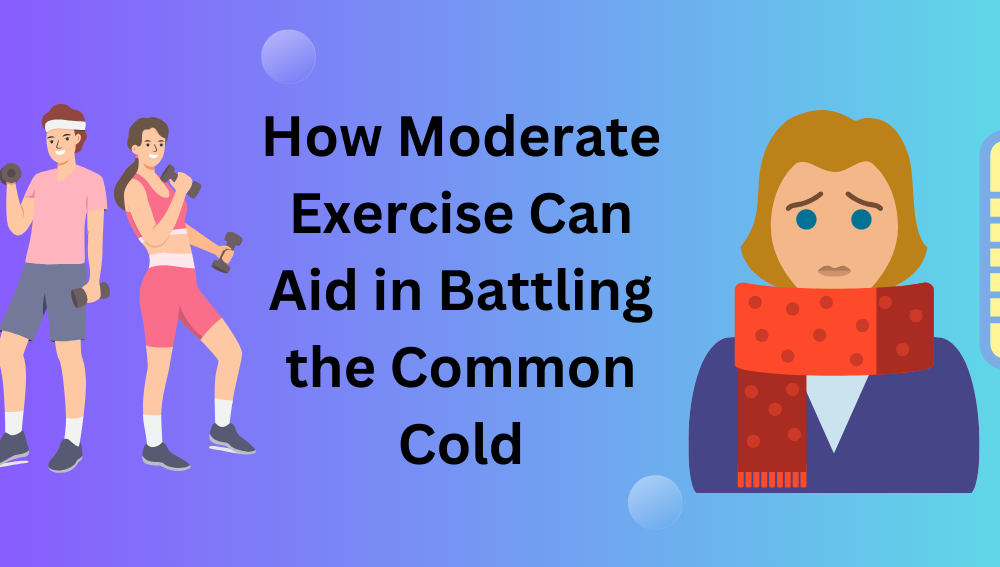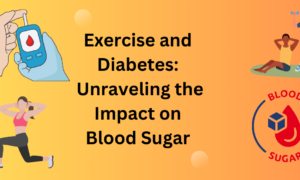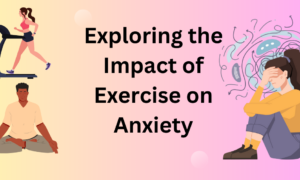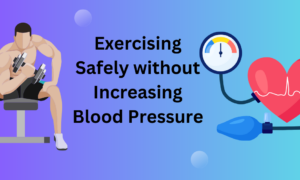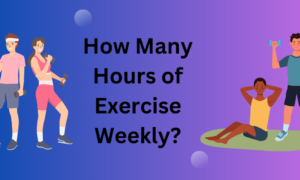From Sniffles to Strength: How Moderate Exercise Can Aid in Battling the Common Cold
You wake up with a stuffy nose, scratchy throat, and a general feeling of malaise. Ah, the telltale signs of a dreaded cold. As you contemplate whether to drag yourself out of bed or hibernate under the covers for the day, you wonder: can exercise help when you have a cold? It’s time to debunk some myths and explore how physical activity can play a role in fighting off those pesky germs. So grab your tissues and let’s dive into this chilly topic!
The body’s response to a cold and how exercise can affect it
When you catch a cold, your body goes into defense mode. It activates the immune system to fight off the virus and restore your health. The symptoms you experience, such as coughing, sneezing, and fatigue, are signs that your body is working hard to combat the infection.
Exercise can have both positive and negative effects on your body’s response to a cold. On one hand, moderate exercise can help boost your immune system by increasing blood circulation and promoting the production of white blood cells, which are essential for fighting off infections. Additionally, exercise can also improve respiratory function by opening up airways and clearing congestion.
However, it’s important to listen to your body when deciding whether or not to exercise while sick. Intense workouts or pushing yourself too hard can weaken the immune system and prolong recovery time. If you’re experiencing severe symptoms like fever or muscle aches, it’s best to prioritize rest instead of pushing through with vigorous exercise.
Instead of high-intensity workouts during a cold, opt for gentle exercises like walking or stretching. These activities can help increase blood flow without putting excessive strain on your already weakened body. Remember to stay hydrated and dress appropriately for exercising in colder weather conditions.
In summary, exercise can have positive effects on the body’s response to a cold, but it’s crucial to find a balance between staying active and allowing yourself enough rest. By listening to what your body needs,
you can aid in boosting immunity while also facilitating recovery from illness. Always remember that every person is different, and what works for one individual may not work for another. So pay attention to how you feel, and adjust accordingly when incorporating exercise into your routine while battling a cold.
How a moderate exercise can boost the immune system?
When it comes to fighting off a cold, boosting your immune system is key. And one way to do that is through moderate exercise. Moderate exercise has been shown to have numerous benefits for the immune system.
When you engage in moderate exercise, such as brisk walking or cycling, it increases blood flow and circulation throughout your body. This helps deliver oxygen and nutrients to your cells more efficiently, including those involved in the immune response.
In addition, moderate exercise stimulates the production of antibodies and white blood cells – both crucial components of a strong immune system. These cells help identify and destroy harmful pathogens like viruses that can cause colds.
Furthermore, regular moderate exercise can also reduce inflammation in the body. Chronic inflammation weakens the immune system over time, making you more susceptible to infections like colds. By reducing inflammation through exercise, you’re giving your immune system a boost.
It’s important to note that moderation is key here; intense or prolonged workouts can have the opposite effect on your immune system by temporarily suppressing it. So stick with activities that get your heart rate up but don’t push yourself too hard.
So next time you feel a sniffle coming on, consider going for a light jog or doing some gentle yoga poses. It may just give your immune system the extra support it needs to fight off that pesky cold!
Recommended exercises for when you have a cold
Recommended exercises for when you have a cold can vary depending on the severity of your symptoms. It’s important to listen to your body and not push yourself too hard, as rest is crucial for recovery. However, if you’re feeling up to it and your symptoms are mild, engaging in some light exercise can help alleviate congestion and boost your immune system.
One great option is going for a brisk walk or a gentle jog outdoors. The fresh air can do wonders for clearing out nasal passages and getting some vitamin D from sunlight may also benefit your immune system. Just be sure to dress appropriately for the weather and avoid strenuous activity that could make you feel worse.
Another low-impact exercise that can provide relief is yoga or stretching. These activities promote relaxation, improve circulation, and help reduce muscle tension often associated with colds. Look for gentle yoga routines specifically designed for illness recovery or focus on deep breathing exercises to ease congestion.
If you prefer something more structured, consider trying low-intensity workouts like tai chi or Pilates. These exercises focus on slow movements that engage the whole body without putting excessive strain on muscles or joints.
Remember, everyone’s tolerance level during a cold can differ greatly – what works well for one person may not be suitable for another. Always prioritize rest over exercise if needed, but don’t be afraid to incorporate light physical activity into your routine if it feels right!
Keep in mind that this advice applies primarily to common colds with mild symptoms; if you’re experiencing severe symptoms such as fever, chest pain, or difficulty breathing, it’s best to consult with a healthcare professional before attempting any form of exercise.
The importance of rest and recovery while sick
Rest and recovery are crucial when it comes to fighting off a cold. When you’re sick, your body needs time to heal and regain its strength. Pushing yourself too hard with exercise can hinder the healing process.
During an illness, your immune system is working overtime to fight off the infection. This takes a toll on your body’s energy levels and resources. By resting, you allow your immune system to focus solely on battling the virus or bacteria causing your symptoms.
Engaging in intense exercise while sick can further weaken your immune system and prolong the duration of your illness. It’s important to listen to your body’s signals and give it the rest it needs.
Taking time off from physical activity also helps prevent the spreading of germs. When you exercise in public places like gyms or fitness studios, you increase the risk of infecting others if you have a contagious illness.
Remember that getting enough sleep plays a vital role in recovery as well. Sleep allows our bodies to repair damaged tissues and replenish energy stores.
While staying active can be beneficial for overall health, it’s essential to prioritize rest and recovery when dealing with a cold or any other illness. Give yourself permission to take a break from exercise until you’re fully recovered – both for your own well-being and for those around you who may be susceptible to catching what you have!
Exercising with a fever or other symptoms – what to watch out for
When you’re feeling under the weather, it’s important to listen to your body and prioritize rest. While exercise can be beneficial for fighting off a cold, pushing yourself too hard when you have a fever or other symptoms can do more harm than good.
One of the key things to watch out for is an elevated heart rate. When you have a fever, your heart is already working overtime to combat the illness. Adding intense physical activity on top of that can put extra strain on your cardiovascular system and potentially worsen your condition.
Another red flag to be aware of is excessive fatigue. If even simple tasks like getting out of bed feel overwhelming, it’s a sign that your body needs rest. Pushing through this fatigue and attempting rigorous exercise could prolong your recovery time and make you feel worse in the long run.
Pay attention to any respiratory symptoms as well. If you’re experiencing coughing, wheezing, or difficulty breathing, exercising may not be advisable at this time. These symptoms could indicate an underlying respiratory infection that requires proper medical care rather than exertion.
Keep an eye on hydration levels. Fever often leads to increased fluid loss through sweating and increased respiration rate. Exercising without replenishing these lost fluids can lead to dehydration which further compromises your immune system’s ability to fight off the cold virus.
Remember, while exercise has its benefits in boosting immunity and improving overall health, there are times when resting is crucial for recovery from illness. Always consult with healthcare professionals if unsure about exercising with specific symptoms or conditions related to having a cold
Conclusion: Exercise can be beneficial for fighting off a cold, but listen to your body and prioritize rest
Exercise can indeed be beneficial when it comes to fighting off a cold. Moderate physical activity has been shown to boost the immune system and help alleviate symptoms. However, it is important to listen to your body and prioritize rest when you are sick.
While exercise may help in reducing the duration and severity of a cold, pushing yourself too hard or exercising with a fever or other symptoms can do more harm than good. It’s crucial to pay attention to how you feel and adjust your workout routine accordingly.
Remember that rest and recovery play a vital role in allowing your body to heal itself. So, while staying active during a cold can be helpful, make sure not to overexert yourself and give your body the time it needs to recuperate fully.
Everyone’s response to exercise during a cold may vary. Some individuals may find that light physical activity helps them feel better, while others might prefer complete rest until they recover completely. The key is finding what works best for you.
So next time you catch a pesky cold but still have the urge for some movement, go ahead! Engage in moderate exercises like walking or gentle yoga if your body permits. Just remember: Listen attentively to what your body needs and always prioritize rest as an essential part of the healing process.

